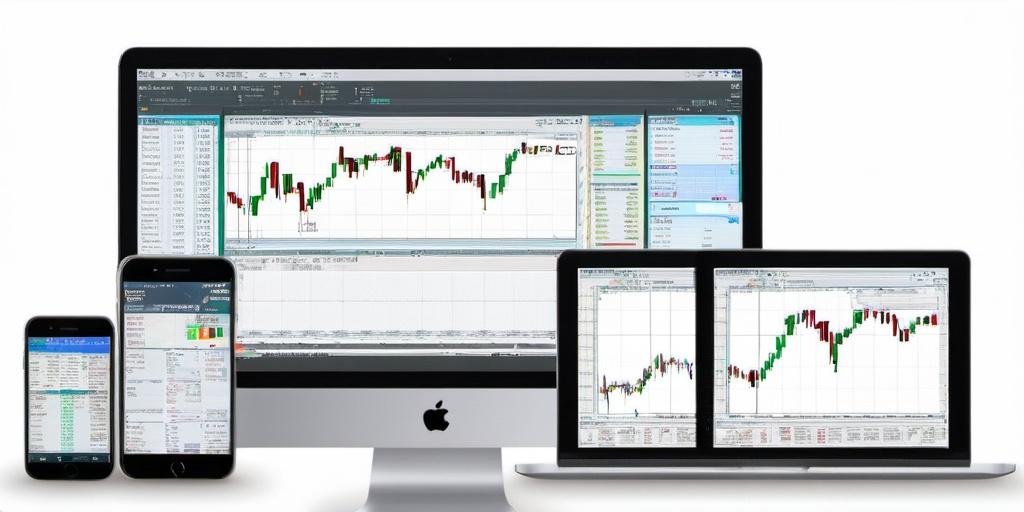Trading Robots
YukonSoft >> Trading RobotsLearn more about Trading Robots

Trading Robots: What Are They?
Trading robots, often known as trading bots, are software programs that interact directly with financial exchanges, keeping an eye on market movements and placing trades on behalf of the user. These bots are designed to take the emotion out of trading, making decisions based on defined algorithms and data rather than gut feelings or emotional responses.
The Basics of Trading Bots
At their core, trading bots are tools that utilize algorithms to analyze market data, predict market trends, and make trades at optimal times. Most trading bots operate based on three key components: signal generator, risk allocation, and execution. The signal generator is responsible for predicting trades, the risk allocation determines how much capital to allocate, and the execution component physically places the buy or sell order.
Signal Generator
The signal generator is where data analysis magic happens. By using various indicators, such as moving averages or MACD (Moving Average Convergence Divergence), trading bots determine the best times to enter or exit trades. While this sounds like something only a Wall Street whizz kid could understand, many platforms offer user-friendly interfaces to set these parameters.
Risk Allocation
Risk allocation is about knowing how much moola to throw into a trade. It’s a bit like deciding how many chips to put on red at the casino but without that free drink service. Bots can help by using predefined risk profiles set by the user or by employing complex algorithms to determine position sizes based on market volatility.
Execution
Execution is the final step, and it’s where the action happens. Once the bot decides on a trade based on its algorithms, it sends the order to the market. Speed is key here; bots can execute trades faster than any human could ever type.
Advantages of Trading Bots
One of the most appealing aspects of trading bots is that they operate all day and night without a break. This 24/7 activity means they can take advantage of market opportunities anytime, day or night, even when you’re catching some Z’s. Plus, they eliminate emotional trading, focusing purely on the data and strategy.
Trading bots are also customizable. Users can tailor strategies to their needs. Whether you’re a conservative trader who dabbles in low-risk investments or a high roller aiming for the moon with high-risk options, there’s a bot for that. Not to mention, many bots come with backtesting features, allowing users to test strategies against historical data before going live.
Challenges and Considerations
It’s no secret that trading bots are not some get-rich-quick scheme. Sure, they sound like magic, but like everything else with money, there are risks involved. Bots making decisions based on faulty data or volatile markets can lead to losses. They also require some technical know-how to set up and maintain.
Financial markets are unpredictable, and while bots can be programmed with stop-loss features to prevent massive losses, there’s no guarantee of profits. Additionally, bots may incur costs, including the initial purchase, licensing fees, or a profit-sharing model with the developers.
Choosing a Trading Bot
When choosing a trading bot, consider factors such as ease of use, level of support, and the types of strategies it supports. Some platforms like MetaTrader offer bots that can be programmed or pre-set. Others offer specific functionalities like arbitrage, scalping, or portfolio management. Assess what suits your trading style and capacity.
Real Life Stories: Traders and Their Bots
There’s this story of a trader named Jake who set up a trading bot while he was in college. Jake spent more time at the library than at his computer, so the bot took over his Forex trades. He ended up funding a semester abroad with the profits. Of course, not every story ends so well, and there are tales of bots gone rogue during market crashes.
The Future of Trading Bots
As AI and machine learning continue to evolve, so do trading bots. They’re getting smarter, faster, and more intuitive in predicting market trends. We’re not saying you should ditch your day job for a trading bot, but with advancements in technology, who knows what the future holds?
In conclusion, trading robots offer a unique tool for traders seeking to streamline their activities and harness the potential of automated trading. They’ve certainly got their quirks but could be a valuable asset in the tech-savvy trader’s toolkit. Just remember, like any tool, they require understanding and responsible usage to fully leverage their potential.